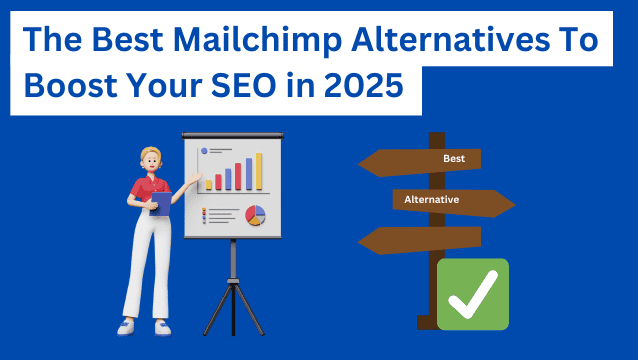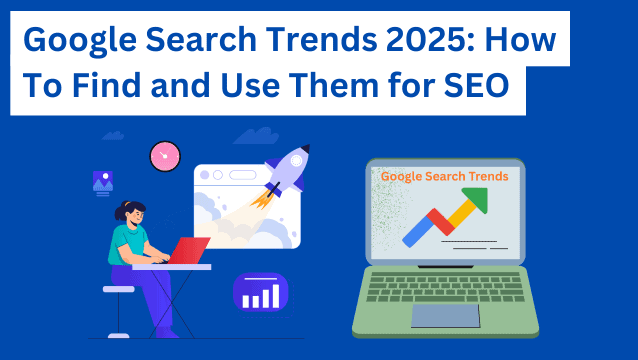“What is a backlink profile?” is one of the most common questions we get as link builders.
And honestly, it’s one of our favorite questions to answer because backlinking changes the game for competitive brands.
Let’s get straight into what backlink profiles are and how you can use yours to beat your competitors in 2025. 👇
Highlights
- A backlink profile is the full picture of inbound links pointing to your website.
- Quality, relevance, and backlink diversity directly impact search engine rankings.
- A strong backlink profile gives you a competitive advantage, domain authority, and long-term SEO stability.
- Monitoring link profiles helps prevent SEO penalties, reveal weaknesses, and identify opportunities your competitors are capitalizing on.
- Evergreen link magnets and strategic content clusters maximize natural linking over time.
What is a backlink profile?
A backlink profile is a comprehensive overview that shows the backlinks (inbound links) pointing to a specific website.
As search engine algorithms become more sophisticated (looking at you, Google updates galore 🙃), optimizing your backlink profile is a smart move if you want competitive dominance.
What does a backlink profile include?
A backlink profile includes:
- Quality of backlinks: Domain authority/Domain rating of referring domains.
- Follow vs. nofollow links: Determines if link equity (“link juice”) is passed.
- Anchor text distribution: The text used in hyperlinks pointing to your site.
- Topical relevance: How closely linked content matches your site’s niche.
- Toxicity score: The presence of spammy, low-quality, or penalized links.
- Link velocity: The speed and frequency at which you acquire new links.
- Historical growth: Backlink acquisition over time (consistency matters).
- Referring domain diversity: Number of unique domains linking to you.
- Link placement: Editorial context vs. footer/sidebar vs. directory.
- Quantity of backlinks: Total number of links to your site.
Benefits of having a strong backlink profile
High-quality backlinks give you a major competitive advantage.
A strong backlink profile …
Directly impacts your search rankings
Google uses backlinks as a primary trust signal. Domain quality and link relevance significantly impact your ranking for competitive keywords. If your competitors have stronger backlink profiles, they’ll outrank you, no matter how good your content is.
One of the few non-replicable competitive advantages
Editorial, niche-relevant backlinks take time, trust, and relationships to earn. A strong backlink profile is a defensive moat against copycat competitors.
Exposes SEO weaknesses that cost you organic traffic
A bloated profile full of toxic or irrelevant links can trigger penalties or suppression.
Over-optimized anchor text or link spam can hurt you without warning. Knowing your profile helps you fix these silent killers before your rankings tank.
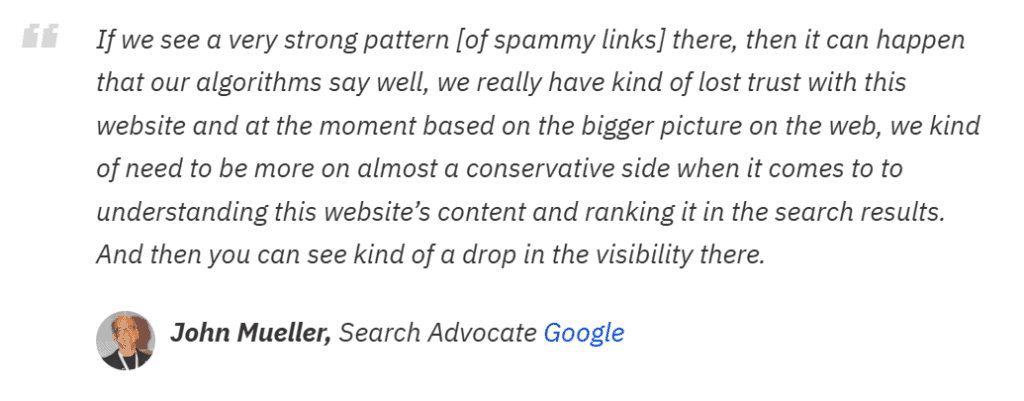
Reveals exactly why competitors are beating you
Backlink gap analysis tells you where competitors are earning trust that you’re not. You can reverse-engineer their wins and capture link opportunities that are moving the needle.
Determines your ability to rank new content
Strong backlink profiles give you domain-wide authority. This helps new pages rank faster with less effort.
(Critical for scaling content production.)
Aligns SEO with business goals
High-authority links from relevant sources can help increase qualified leads and conversions.
Supports long-term SEO stability
Content quality can degrade, and algorithms can shift. But a diverse, trusted backlink foundation can help keep your domain resilient over time.
SEO industry changes + Why your backlink profile matters more than ever in 2025
Your backlink profile tells an important story.
It reveals who trusts you, where you’ve been mentioned, and how your site connects with the rest of the web.
Backlinks have always carried weight. But recently, SEO has changed … again.
First, there was Google’s March 2024 core update (sometimes called the Helpful Content Update). This was a major complex update that pushed for more “people-first” helpful content.
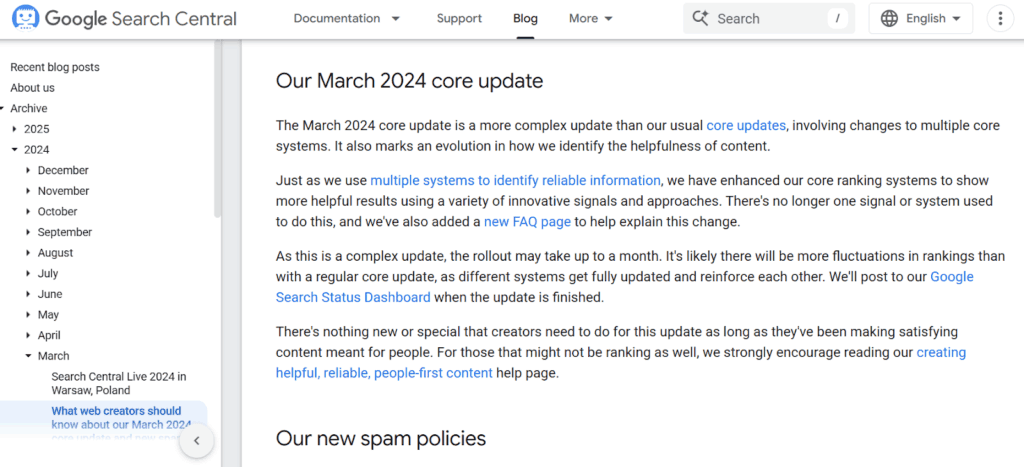
And now, AI SEO is raising the bar even higher. Google’s systems are analyzing not just the link itself but the intent, context, and credibility behind it.
The gist is this: Strong backlinks from relevant, respected sources signal authority and confirm that your site belongs in the conversation. They’re one of the most practical aspects of SEO that align with user experience signals, like E-E-A-T.
They show you have expertise, experience, and trustworthiness worth referencing.
A weak profile with irrelevant or low-quality links now chips away at your credibility. (It’s like having good content, but hanging out with the wrong crowd. Your reputation suffers by association.)
A spammy guest post with over-optimized anchors doesn’t slip through anymore, either.
With Google’s new spam update, algorithms can recognize when a mention naturally fits into a trusted article versus when it’s being forced for SEO.
And then there’s the competitive angle.
Content creation is easier than ever with AI, which means thousands of businesses are publishing at scale. But most of it sounds the same. (And pretty beige if you ask us!)
Backlinks cut through that noise because they’re harder to fake.
A competitor can copy your blog post style in a day. But they can’t duplicate years of earning high-trust links from industry publications, partnerships, or thought leaders.
That’s what makes your backlink profile such a durable advantage.
It’s proof of real relationships and recognition in your niche. It’s proof that you care about publishing high-quality content that people WANT to read and reference.
Deep insights: How to analyze and use your backlink profile strategically
Before optimizing your backlink profile, check to see where you stand.
You need to know:
- How your links look in Google’s eyes.
- How to use that knowledge to get ahead of competitors.
Here’s what you need to do: 👇
Map the authority gap between you and competitors
The fastest way to know where you stand is by comparing your backlink profile against the competitors that rank above you.
Use trusted tools like Ahrefs or Semrush to see the number of referring domains, the strength of those domains, and how balanced anchor text looks.
In the screenshots below, for example, you can see Ahrefs’ Link Intersect tool comparing three competitors to the website schwartzplumbing.com. In the second screenshot are the results and details regarding the domains that link to the competitor sites, but not to schwartzplumbing.
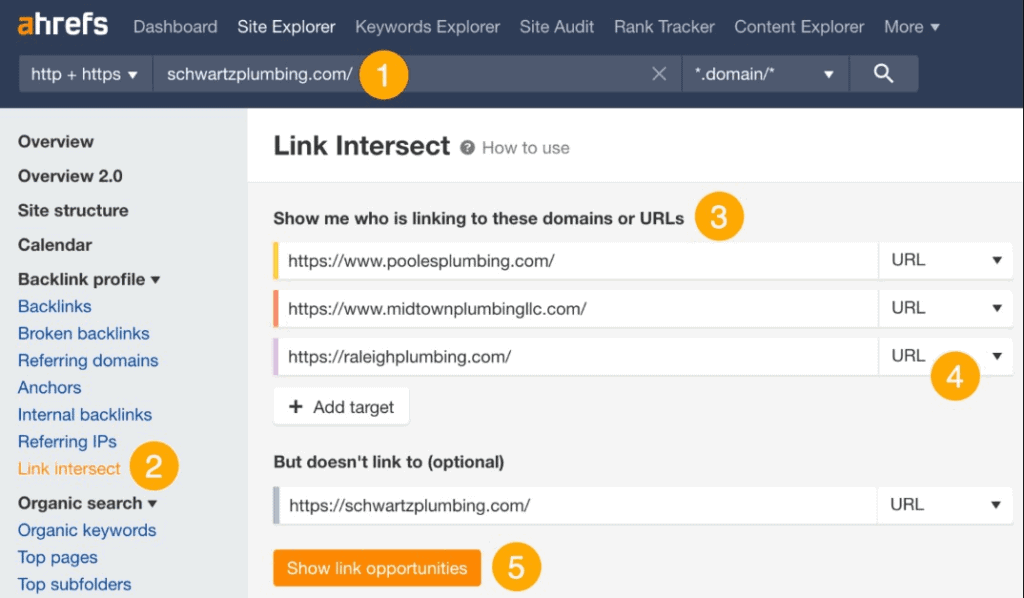

This kind of comparison and analysis provides valuable insight and shows you exactly where new backlink opportunities lie.
Prune and disavow toxic links
Not all links help. Some actively hurt. A quarterly audit helps you spot patterns like links from hacked sites, shady networks, or spammy directories.
Google’s AI is better at spotting manipulation, but it still matters to clean house.
Use the disavow tool sparingly and only when links are clearly harmful. The goal is a profile that looks natural, not inflated with junk.
Optimize anchor text distribution
Anchor text helps Google understand your page’s topic and relevance.
Overusing exact-match keywords purely for SEO can look manipulative, so the best approach is to strive for balance.
Use a mix of:
- Descriptive/contextual phrases that naturally fit the content
- A controlled portion of exact-match anchors for key terms
- Branded anchor text
This combination strengthens your topical authority while helping you keep a natural, credible backlink profile.
Diversify your referring domains
Google values both reach and influence. Links from many unique domains show your site is widely recognized. And multiple links from the same authoritative site signal trust and authority.
Pursue both: Get featured on new sites and earn repeated mentions from top-tier domains through media coverage, guest posts, or resource lists.
Pursue content-to-link mapping
Not every page attracts links, but the ones that do give you ample opportunities to acquire more quality backlinks.
For example, identify the pages that naturally earn backlinks, then create supporting content around them. If a blog post earns dozens of links, add infographics, surveys, or case studies as companion pieces.
Interlink these assets to strengthen your topical cluster and attract more natural links.
Leverage competitor backlink gaps
Competitor analysis uncovers even more opportunities.
Find where competitors have links and you don’t. (Some placements are hard to get, but many are replicable if you offer something better.)
For example, if a competitor has an older guest post on a trusted industry blog, pitch an updated article with fresh insights.
Here’s a 2022 guide that could use some refreshing to give you an idea:
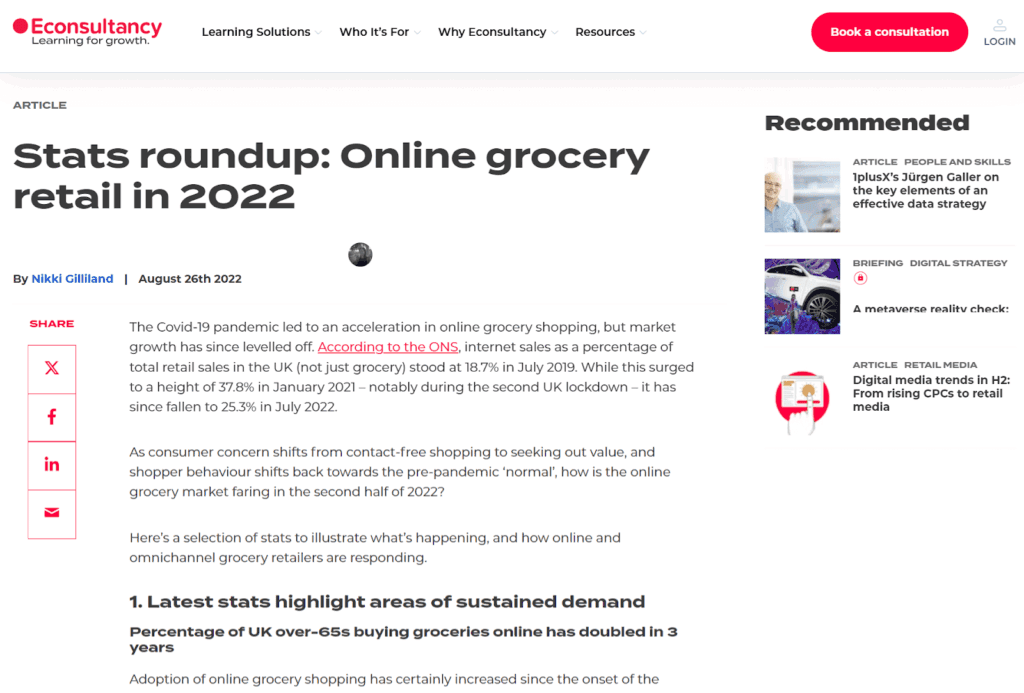
Or, if they appear in a resource roundup, show how your tool, guide, or case study adds more value. You’d be surprised how many more links you can get by targeting these gaps.
Track link velocity and avoid suspicious spikes
Link growth should match your site’s natural trajectory. (A sudden flood of hundreds of new links looks artificial, especially if they’re all from weak sources or the content is beige.)
Instead, think of backlink growth as a mirror of your content growth and brand visibility. Seasonal spikes can happen. But they should align with real-world campaigns, trends, or traffic surges.
Consistency and playing the long game win over bursts.
Plus, with AI SEO, recent sources carry the most weight. This means backlinking needs to be a part of your content marketing strategy indefinitely, because your older links may lose impact.
There’s some nuance here, see below. 👇
Create evergreen link magnets
Some content doesn’t earn links once. It keeps earning them.
Industry studies, calculators, surveys, and stats pages are great examples.
People reference them repeatedly, sometimes for years if updated, which means they become long-term link magnets. Position these as cornerstones in your strategy, then build other content around them to strengthen topical relevance.
Measure link ROI in ranking movements
You need links that impact your brand’s authority, and ideally, help you grow your monthly recurring revenue.
Use a rank tracker and backlink checker tool to track page authority after earning strong backlinks.
If high-authority links don’t improve rankings, authority, or conversions, check for other issues. (Your content might not match the search intent, or on-page SEO may need work, for example.)
Remember, backlinks are only one part of the ranking factor puzzle.
Protect your best links from link rot
Even strong backlinks aren’t always permanent. Publishers might delete pages, change anchors, or drop links during site updates. Monitoring tools help you catch these losses early.
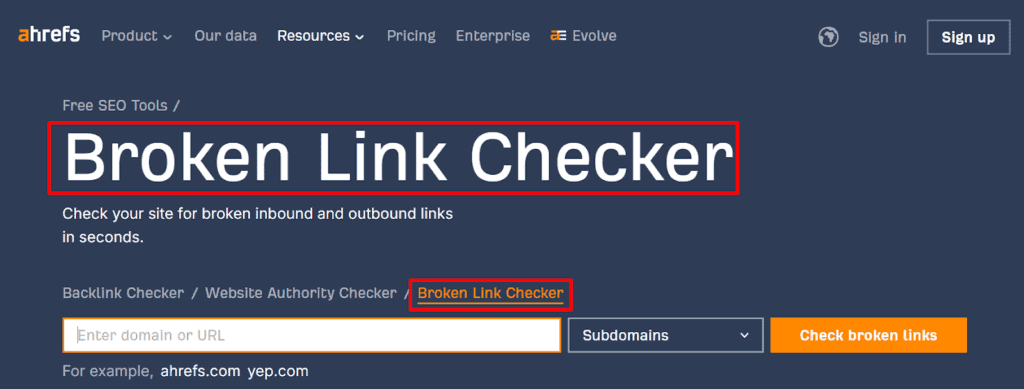
But when you spot them, make sure to act quickly. Reach out to restore the mention, redirect broken URLs, or update your own content to stay relevant.
Preserving your best links can be just as important as building new ones.
What to do with this information (a quick backlink profile optimization checklist)
Use our quick checklist below to start putting these insights into action. We’ve bolded some of the most important items to check off!
- Audit your backlink profile today with Ahrefs/Semrush.
- Compare it with the top 5 ranking competitors for your money keywords.
- Create a toxic link disavow list.
- Normalize anchor text distribution across your entire site.
- Set a monthly goal for new referring domains (not solely backlinks).
- Build or update one linkable asset per month.
- Reverse-engineer your competitor’s best backlinks and pitch replacements.
- Use content clusters to support link magnets and distribute authority.
- Track changes on search engine results pages based on new links to gauge effectiveness.
- Build relationships with editors, journalists, and creators in your niche.
Wrap up: What is a backlink profile?
Your backlink profile reveals your level of trust, authority, and influence across the web.
Strong backlinks:
- Signal to Google that your content deserves attention.
- Help new pages rank faster.
- Provide long-term SEO stability that keeps your domain resilient against algorithm shifts.
Actively monitoring, cleaning, and optimizing your links transforms your profile into a measurable competitive advantage.
If you want to take control of your backlink profile and turn it into a powerful SEO asset, book a call with uSERP now. We’ll audit your links, uncover opportunities, and build a strategy that drives traffic, authority, and real results.
Guaranteed.
FAQs, re: “What is a backlink profile?”
1. How often should you audit your backlink profile?
You should audit your backlink profile at least quarterly.
Perform a full audit every few months to check for toxic links, monitor anchor text distribution, and track growth trends. Regular audits prevent SEO penalties and uncover new opportunities to strengthen your backlink profile. Outsource to a link building pro if you need support.
2. Do you need a certain number of backlinks to rank?
You don’t need a specific number of backlinks to rank. Instead, focus on the quality, relevance, and diversity of your links. A few high-authority backlinks often outweigh hundreds of low-quality links.
3. What types of backlinks should you prioritize?
You should prioritize editorial and niche-relevant backlinks. Links from top-tier sites and repeated mentions from authoritative domains contribute most to your website’s trustworthiness and SEO strength.
Diverse sources also reinforce your site’s credibility across the web.
4. Can you rely on old backlinks indefinitely?
No, you can’t rely on old backlinks indefinitely.
Even strong links can lose impact over time — continuous outreach, updating content, and acquiring new backlinks are pivotal to maintaining authority and ranking performance.
5. How do you leverage competitor backlinks effectively?
You can leverage competitor backlinks effectively by identifying sites linking to competitors but not to you. Offer improved content, updated data, or better tools to earn those links.
